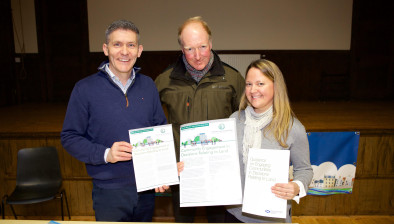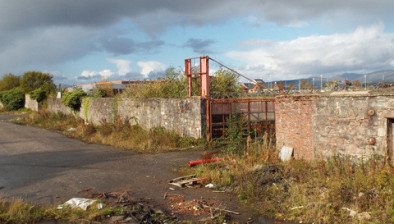Public sector ‘must take leading role’ to deliver land for new homes in Scotland
Significant reform is needed to the way land is brought forward for housing and development if Scotland is to build the houses it needs, according to the Scottish Land Commission.
Aerial view of the Achtercairn development in Gairloch, Wester Ross (Image credit: Communities Housing Trust)
Publishing a review and recommendations to Scottish Ministers about land for housing – the culmination of two years’ work on this topic - the Commission is proposing a new model where the public sector takes a leading role in the housing land market to create places people want to live at prices they can afford.
The Commission said the approach set out in the recommendations could help Scotland deliver more homes more quickly while helping to address the housing crisis as well as delivering benefits that go well beyond that.
Speaking about the review, Hamish Trench, chief executive at the Scottish Land Commission, said: “Currently Scotland is not delivering enough homes of the right type and in the right places. An important part of the equation is land: getting land development-ready is complex, risky and time-consuming. We have relied for too long on an almost exclusively market-led model of delivery rather than an approach that has the public interest at the heart.
“Our recommendations outline a number of changes that can be made to reform the housing land market so that it better serves the people and communities of Scotland in a fair and productive way.
“We are proposing that the public sector plays an active role in enabling housing delivery by providing land for new homes. This is not about a public sector takeover but about the public sector working in partnership with the private sector to deliver more homes.
“A more proactive role for the public sector will share the risk and reward, enabling developers to focus on building houses and creating better places, allowing more affordable homes of all tenures to be built.
The Commission has made five, practical recommendations for reform that draw on Scotland’s long history of bringing together planning, land ownership, design and infrastructure to deliver great places.
Hamish Trench added: “Somewhere in our enthusiasm for market-led delivery this tradition has been diluted. Our recommendations set out a programme of reforms and action that could help us rediscover it. It also brings much wider benefits to Scotland’s economy, helping to stabilise house prices making them more affordable and releasing wealth locked up in land and housing to help drive sustainable and inclusive growth.”
The commission’s report sets out five building blocks which together, would deliver this shift. Recognising the scale of change needed, the recommendations are structured to provide a practical pathway to implementing reforms in a phased way.
The five building blocks are:
- Establish a new recyclable fund to help create a network of ‘place pioneers’ – an ambitious programme of affordable housing delivery utilising repurposed publicly owned property assets in town centres and privately owned housing stock in remote rural communities.
- Empower local authorities to designate Regeneration Partnership Zones to speed up the redevelopment of land in fragmented or multiple ownership so that landowners and public authorities can share the long-term uplift in land values.
- Introduce new approach(es) to land value capture to ensure that uplifts in land value arising from public investment in infrastructure and land remediation are captured effectively and invested in place-making.
- Create a new public land agency, with the power and resources to ensure that a steady supply of development-ready sites is brought forward at the right time and in the right places to meet Scotland’s housing needs.
- Introduce a new transparency obligation that would require options agreements and conditional contracts over land to be disclosed on a public register that is kept updated alongside regular publication of a statistical bulletin on land sales prices.
The Commission has carried out several studies in the past two years which have informed the current report and recommendations.























